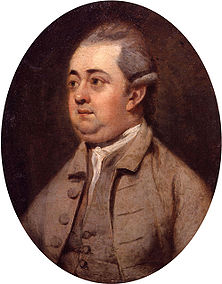So Better Half and I went to the MFAH yesterday to feast FIRST on Titian and other Venetian Renaissance Painters.
That exhibit is small, well spaced and can be leisurely viewed in depth, thanks to timed ticket entry.
It is really rather pleasant to be able to stand and admire without hordes of visitors battling for space in front of these luminous masterpieces. And return for a revisit to the one or two that truly capture one's imagination or emotions.
 |
| Titian: Diana and Actaeon |
There are the two large Diana paintings by Titian who headlines this show.
But there are also 13 drawings by Titian, Tintoretto, and Veronese and other Venetians, often used preparatory to the final work. There are also 10 masterpieces in oil from the National Galleries of Scotland's collection of Venetian Renaissance works. The paintings includeTitian's Venus Rising from the Sea;
Lotto's The Virgin and Child with Saints Jerome, Peter, Francis 
with pictorial hints about events (e.g St Francis pointing to stigmata as found on Christ body, the cutting of tree=the future cross of Christ);
Paris Bordone's Venetian women at their Toilette
;
Painting of an Unidentified Young Female as St Agatha

by
Cariani also known as
Giovanni Busi;
Tintoretto's  Christ Carried to the Tomb-
Christ Carried to the Tomb-depicting the sorrow of Mary.
Veronese's Venus, Cupid and Mars, a somewhat darker toned oil.
and
Jacopo Bassano's  Adoration of the Magi,
Adoration of the Magi, quite a favorite theme for
Bassano. All exhibit luminous colors, and fairly true perspective. And the beauty of the (at times nude) human body comes through in most paintings with a clarity and naturalness that's simply etheral.
And that leads me to the next stop. More bodies.
Another timed entry, this one to
Helmut Newton's photographs.
Several of these are photos of female (and a very few male) mostly nudes, some are of rather suggestive nature. From Helmut Newton´s White Women (1976), Sleepless Nights (1978), and Big Nudes (1981). Newton was known as a supreme recorder of female nudity in over 200 photographs.
He also made his name as fashion

photographer for Vogue.
Newton, born 1920 as Helmut Neustaedter in Germany– died 2004 in Los Angeles. The prints on view from White Women • Sleepless Nights • Big Nudes were made specifically for the exhibition.
Some are huge - nearly 8 x 8 feet.
And, as I mentioned earlier, do remind me of the works (in oil) of the Renaissance painters who also depicted nude bodies. Albeit in much less suggestive modes.
But really, how many front, back and side views of female bodies can one view at one visit?
Overwhelmed..... and underwhelmed too! I admit!
And there are many, in black and white, in color, artfully posed in chambers, poolside, totally nude, suggestively clad etc.
Apropos "clad" on to the last stop of our Arty Afternoon:
The installations of Charles LeDray listed as workworkworkwork.
And work it sure is! What a busy bee he must be!
The collecting and/or making of thousand tiny utensils.
The stitching together of mini jackets, pants, shirts, ties,

etc.
The making of small furniture heaped with painstakingly handmade stuff.
The arranging of buttons, scraps of fabric..and so on.
Tiny books with tiny drawings. Dollhouse tiny pieces of furniture...
Wall hangings reminiscent of quipus? ...
Glass cases filled with "Throwing Shadows" (2008–10) more than 3,000 unique minuscule black porcelain pots, each less than 2 inches tall - arranged with military precision.
As are other tiny vessels in 2 vitrines, these however are beautiful copies of colorful ancient vases, pots and more.
Sebastian Smee of the Boston Globe:“LeDray has a poet’s ability to concentrate and lift the imagination. His work registers loneliness and futility, yes, but also togetherness, renewal, and all the endless idiosyncrasies of life"
.
What will people
not do to present "art" of their own making? And what will critics
not write about it in mystical sentences? But at least it was a somewhat fascinating experience..especially to a doll collector!
 |
That one is my favorite.. it so reminds me of this painting of
OUR LADY OF THE FORSAKEN
(La Virgen de las Desamparados).
She represents a medieval brotherhood that cared for the insane and disabled, and buried the dead left in the street. On the second Sunday in May her effigy is carried from the Basilica to the Cathedral in Valencia, and is honoured on her return with displays of rose petals.. |
by Tomás Yepes (c. 1595–1674) sometimes known as Hiepes. He painted this which also shows his attention to minute beautiful details..

It hangs in the Prado, Madrid..











 ;
;
 Christ Carried to the Tomb-depicting the sorrow of Mary.
Christ Carried to the Tomb-depicting the sorrow of Mary.  Adoration of the Magi, quite a favorite theme for
Adoration of the Magi, quite a favorite theme for 
 photographer for Vogue.
photographer for Vogue. etc.
etc. 


 It hangs in the Prado, Madrid..
It hangs in the Prado, Madrid..

 ...
...
 HA!
HA!



 still stands on the Ring near the University in Vienna. It was designed by Danish architect Theophil von Hansen, designer of the
still stands on the Ring near the University in Vienna. It was designed by Danish architect Theophil von Hansen, designer of the 
 (home of the Vienna Philharmonic), to name a few truly outstanding buildings. Growing up in Vienna
(home of the Vienna Philharmonic), to name a few truly outstanding buildings. Growing up in Vienna  inro, which were held shut by sliding beads on cords with fasteners that secured the cord at the top of the sash called netsukes
inro, which were held shut by sliding beads on cords with fasteners that secured the cord at the top of the sash called netsukes ,
,








